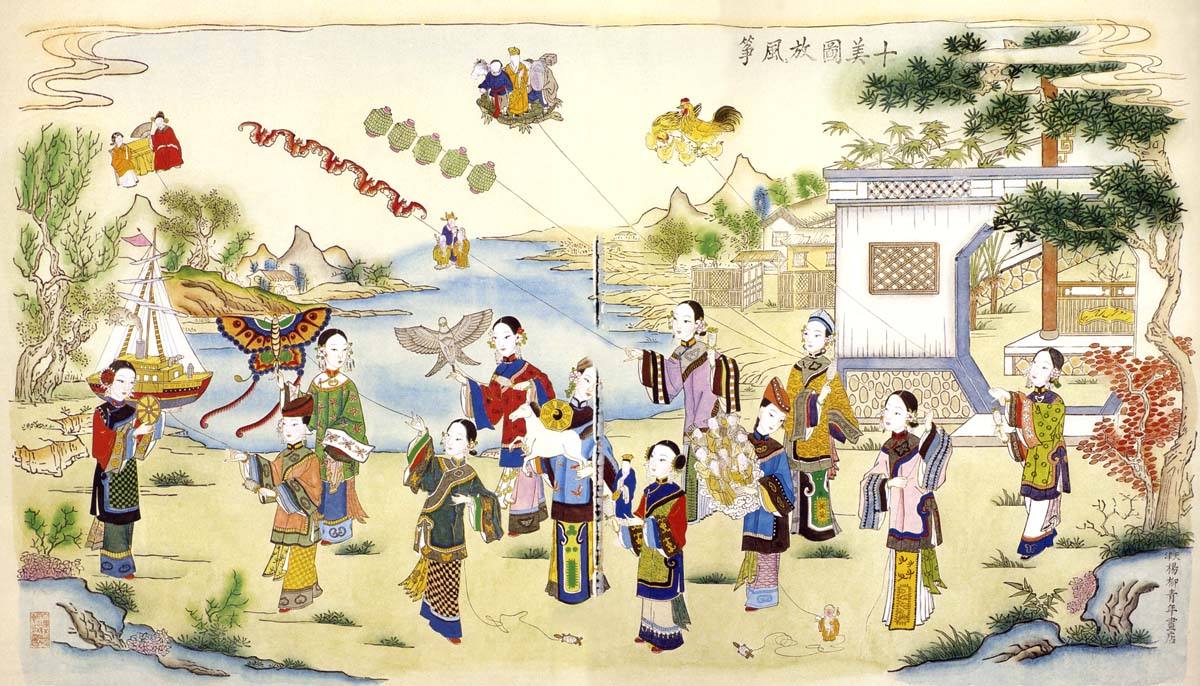Kite making styles in various regions

The painting Ten Beauties Flying Kites depicts 10 beautiful ladies of the Qing Dynasty flying various styles of Tianjin kites.
Chinese kites have a history of more than 2,000 years. As a folk art, Chinese kites have developed according to various schools through history. While China covers a vast geographic area, different regions have gradually formed their own unique styles of making kites.
Weifang kites
Weifang, located in Shandong Province, eastern China, is renowned for its long history of handicraft manufacturing. Weifang is famous for clay sculptures, jewelry, embroidery, Yangjiabu woodblock New Year’s paintings and kites. Weifang has even become known in some quarters as the “international capital of kites.” The long history of kite manufacturing has added certain regional elements to Weifang kite styles. After the Song Dynasty, Weifang kites came into vogue, and were particularly common in the Ming and Qing dynasties. Zheng Banqiao, a famous Qing painter and the county official in Weifang, once, in a poem, described a scene where local people in Weifang flew kites during the Qingming Festival.
Several generations of craftsmen have demonstrated innovation in kite-making skills. They subtly combined Chinese painting and Yangjiabu woodblock New Year painting in their kite-making efforts, forming various new kite-making schools. The most representative image of Weifang kites is the centipede kite with a dragon head.
Beijing kites
Beijing has a 300-year-long history of kite-making. During the Qingming Festival, it is a folk custom for Beijing residents to go outside when the grass has turned green during spring, and sweep their ancestors’ tombs and fly kites outdoors. Historical materials in the Qing Dynasty indicate that at that time, the most exquisite Beijing kites were quite expensive.
Tianjin kites
Tianjin kites also have their own distinctive characteristics. Famed kite-maker Wei Yuantai made the greatest contribution to developing Tianjin kite-making skills. He was involved in this industry for more than 70 years and invented the soft-winged kite and broken-winged kite. Wei’s kites represented the essences of Tianjin kites, with their vivid shapes, elegant colors and fine workmanship.
Sichuan kites
Sichuan kites are mainly popular in the regions of Chengdu and Mianzhu. Sichuan kites require both ink markings and painting skills. Craftsmen initially print the line of figures or animals on the paper in an ink marker, then paste the paper on the kite frame and add some harsh colors on the figures.
